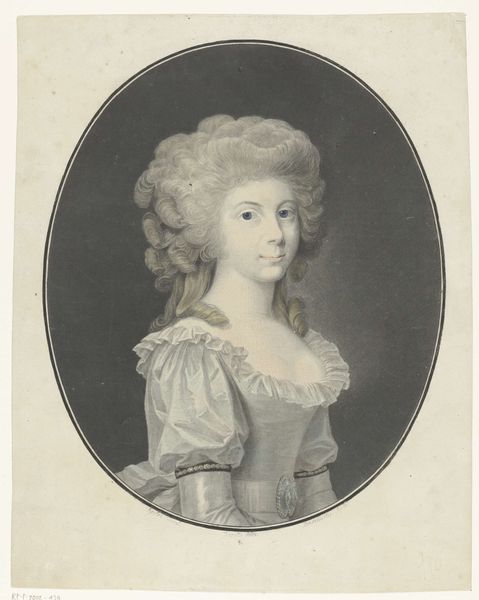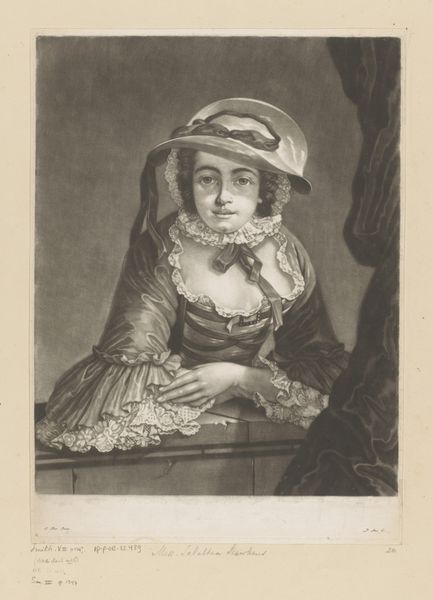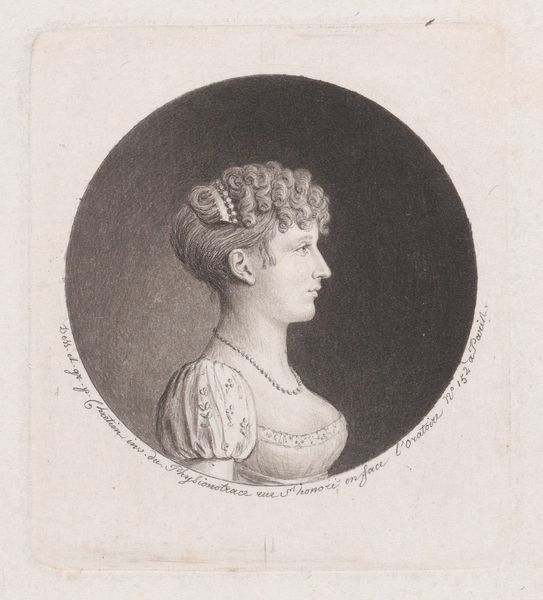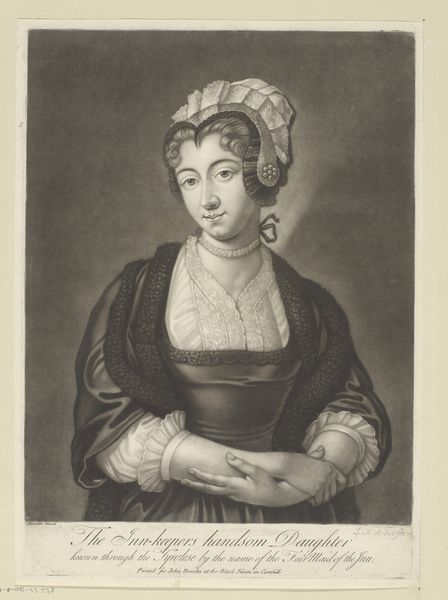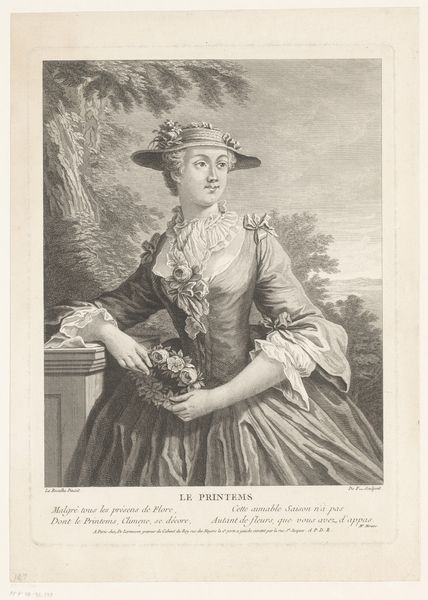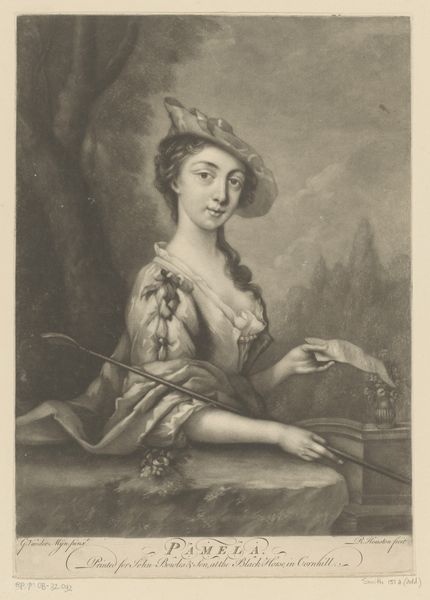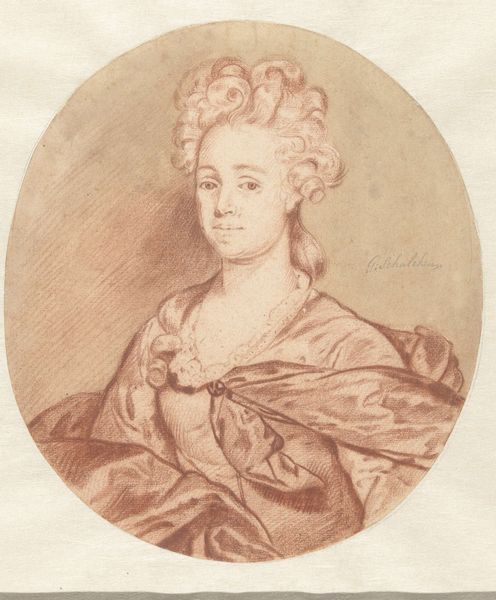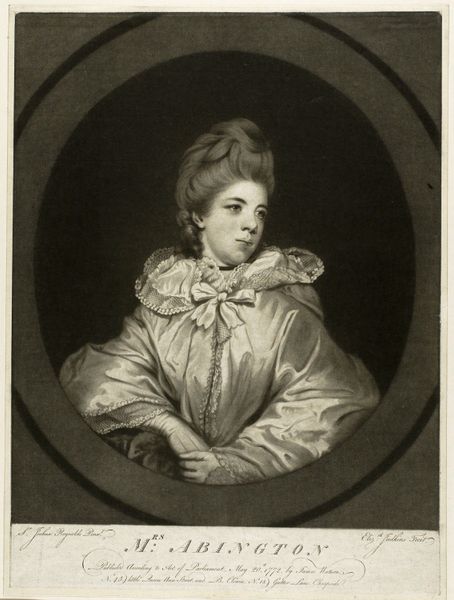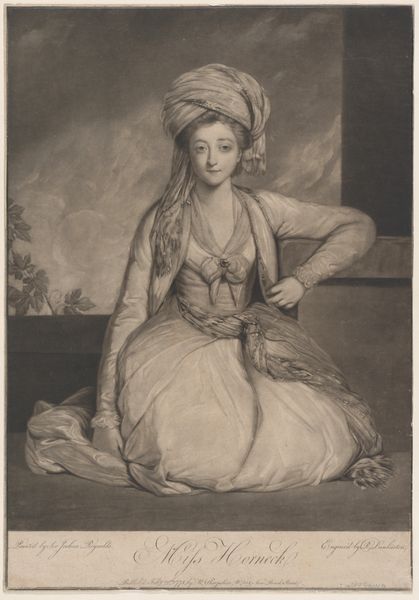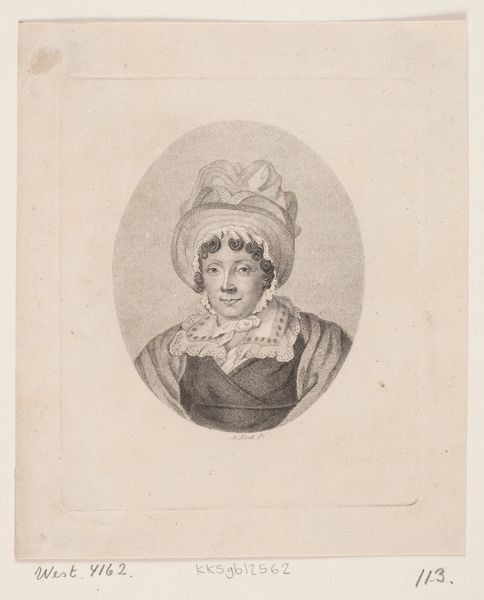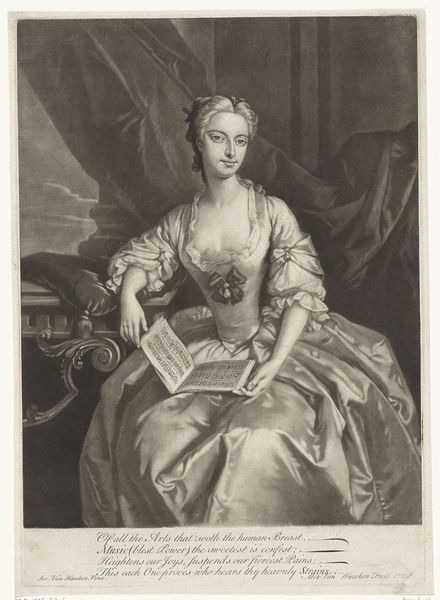
Portrait of Vigée-Lebrun 1770 - 1824
0:00
0:00
drawing, print
#
portrait
#
pencil drawn
#
drawing
#
toned paper
#
light pencil work
# print
#
pencil sketch
#
old engraving style
#
charcoal drawing
#
charcoal art
#
pencil drawing
#
men
#
pencil work
#
graphite
Dimensions: image: 3 1/4 x 2 13/16 in. (8.2 x 7.2 cm), oval
Copyright: Public Domain
Editor: This is a print of a pencil sketch depicting the “Portrait of Vigée-Lebrun,” created sometime between 1770 and 1824 by Jean Philippe Guy Le Gentil. It gives off this wonderfully elegant and artistic vibe, and it really captures a specific era. What strikes you most about this portrait? Curator: I see a potent symbol of female agency within the constraints of 18th-century society. This portrait depicts a successful woman artist, Vigée-Lebrun, not just as a subject, but as an active creator, holding her palette and brushes. The feather in her hat, the delicate lace—they speak of aristocratic patronage, but her direct gaze challenges that. Editor: Challenges how, exactly? Curator: Think about the male gaze that often dominated portraiture of this period. Here, Vigée-Lebrun asserts her own identity and profession. She's not passively being looked at; she's actively creating, representing herself. Editor: That's a great point. It almost feels like she is both subject and object in this artwork. Do you think her self-representation through the art and in the art gave her a unique level of power? Curator: Absolutely. By controlling her image, Vigée-Lebrun challenged the existing patriarchal structure that confined women to limited roles. Her art became a form of activism, subtly pushing against societal norms, and laying the groundwork for future generations of women artists. Editor: I never considered that before, but now I definitely see this piece in a new, more empowered light. It is almost radical for the period. Thanks! Curator: Indeed. It’s through such intersectional readings, considering gender, class, and historical context, that we unlock the full potential of art historical analysis.
Comments
No comments
Be the first to comment and join the conversation on the ultimate creative platform.

